
Video Library
Art Keeps Us Human

Art teaches. Art communicates. Art has humor, adventure and passion. Art matters! People are the only living creatures who make art. It is a uniquely human activity, and the sole reason we have an advanced civilization. We use visual images to communicate with one another as a species. Art transcends language, different cultures, time and distance. It keeps us connected to one another. It keeps us human.
Join us for a mini-history of western civilization through art, from the caves to the shuttle, to see and understand how art and civilization depend upon each other. Be sure to bring your sense of humor and your sense of Human.
Art Keeps Us Human

Art teaches. Art communicates. Art has humor, adventure and passion. Art matters! People are the only living creatures who make art. It is a uniquely human activity, and the sole reason we have an advanced civilization. We use visual images to communicate with one another as a species. Art transcends language, different cultures, time and distance. It keeps us connected to one another. It keeps us human.
Join us for a mini-history of western civilization through art, from the caves to the shuttle, to see and understand how art and civilization depend upon each other. Be sure to bring your sense of humor and your sense of Human.
Italian Renaissance
After almost 1000 years of "dark ages", the genius of Leonardo Da Vinci, and Michelangelo led the way for a "Rebirth" of learning, art and humanity. They helped to cast a bright new light on culture, and to rekindle a love of learning which encouraged science, new technology and a growing humanity. Join us for a look at their lives, their work, and a discussion of the Italian Renaissance.

Leonardo Da Vinci

He was one of the greatest painters in the world, but painting was not what he did the best. Da Vinci was a scientist, a chemist, a mathematician, an engineer, a designer of military equipment and strategist, a sculptor, a concert level musician, and an inventor. He was The Renaissance Man. Join us for a look into all the works of Leonardo Da Vinci and the vision that was his genius.
Ancient Civilizations
Please join us to examine art from the four great ancient civilizations; Mesopotamia (present day Iraq), Egypt, Greece and the Roman Empire. Each culture in turn contributed to the foundation of our own civilization. From these great cultures we get writing, government, law & order, institutionalized religion, advanced culture, and the spread of information and ideas. Each civilization developed new and greater achievements, adding to the quality of life for all mankind.

Ancient Egypt

Coming Soon
The Ancient Egyptians gave us the calendar, astronomy, wondrous engineering marvels, historical records and poetry. They had an elaborate relationship with many Gods, and their fabulous art gave them the power of life over death. Join us as we enter the private tombs and look into the eyes of people, just like ourselves, that lived more than 5,000 years ago.
Ancient Greece & Rome
Nothing less than the flowering of civilization. Join us to examine, through their art, the contributions of Ancient Greeks: philosophy, religion, mathematics, science, poetry & literature, even democracy. The Romans spread that culture to dominate the whole of Europe and beyond. They established urban life and the basis for our own culture.

Coming Soon
Northern Renaissance

The Northern Renaissance includes some of the greatest artists and the boldest innovations, not the least of which is the invention of oil painting itself. Join us to view some Old Masters artwork from Flanders, Holland, Germany, England, & France.
Rembrandt & Vermeer
Rembrandt Harmenszoon van Rijn and Johannes Vermeer, two of the greatest painters the world has known. Two brilliant artists, opposite in their artistic styles, but both of whose lives were noted for their tragic struggles and financial failures. Enjoy the drama of Rembrandt and the unique quiet of Vermeer. Take an ArtMatters hour, and connect to the masters.

Portraits in Art

A portrait is much more than a picture of what someone looks like. A portrait can document the history of a whole family, or a single individual’s journey. It can be about an era of time, a culture, an event, or the experience of youth or age. It can tell stories, be self revealing or serve as a commentary of social values or political institutions. Join us for a look at the many possibilities of the Portrait in art. Share your own point of view.
Impressionism
The Impressionists, painters of light, painters of nature, and painters of human nature, changed the way the whole world looked at art. Like a stone dropped into a still pond, the ripples from this revolutionary style of painting spread out, influencing a whole new generation of artists. Join us for a close look at many of the paintings that moved the world into the modern era.
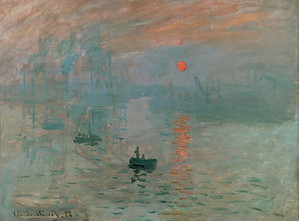
Post Impressionism
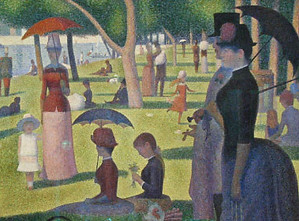
Like a stone dropped into a calm pond, the ripples from the revolutionary Impressionist style of painting spread out, influencing a whole new generation of artists. Join us for a look at how other artists interpreted this new, personally expressive way of painting, and in turn influenced the course of art in the 20th century.
Symbolism & Expressionism
Influenced by Gauguin and Van Gogh, these two movements blossomed in the early 20th century. They were to stress person- al expression, and pushed the envelope of artistic self expres- sion to greater levels of joy, angst, and controversy. Join us to see powerful images from artists Munch, Klimt, and Beckmann, among others, as they take us on a visual journey (not for the squeamish), to explore our most inner fears and desires . . .
if you have the nerve.

Coming Soon
Claude Monet
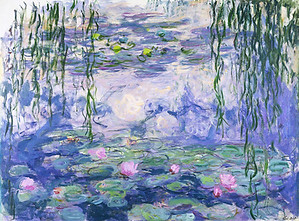
Coming Soon
The engine behind the Impressionists. The artist whose direct observation of nature, atmosphere and light is most associated with the ideals of Impressionism. Join us for a retrospective look at his life, his work, his influence and his contribution to the most revolutionary new style of painting.
Auguste Renoir
One of the most popular of the Impressionist painters, Renoir was the romantic of the group. His paintings celebrate life and love. “I wish to lend joyousness to a wall!” His life did not mirror his reliably happy images, filled with music, dancing, & dappled sunlight. He was socially nervous, and later severely handicapped with arthritis. Join us in celebration of Renoir.

Coming Soon
Monet & Renoir
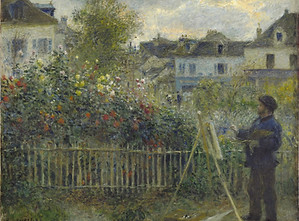
They were fast friends at the very heart of the most radical revolution in art since the Renaissance. Join us for a tour through the life and works of Claude Monet and Auguste Renoir, two of the most beloved of the Impressionist artists.
Mary Cassatt
An American woman was at the very heart of a radical revolution in art. Impressionism changed the art world forever. Overcoming social stigma, and cultural as well as national boundaries, Mary Cassatt defied the times to become an inde- pendent, innovative, and professional artist. She is famous for her unromanticized images of women and children, not saccharin or sentimental, but honest, realistic and yet still adorable. Join us for a look at her beautiful images, her interesting life and her celebrated accomplishments.
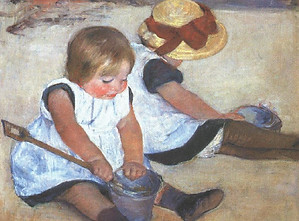
Coming Soon
Edgar Degas

Coming Soon
Known as the “Great Bear” of Paris, Edgar Degas was witty, urbane, chauvinistic, and misogynistic. He was an aristocrat who detested aristocrats, especially female aristocrats. He became known for painting ballerinas, “those little rats”. But also known for the use of dramatic diagonals, dynamic, off-centered compositions, and for elevating the humble pastel into the realm of fine art. His many contributions to the revolution that would be called Impressionism would help to change the art world forever.
Cassatt & Degas
An American woman and a French Chauvinist, as unlikely a pair as any you can find, were friends and some say lovers, at the very heart of a radical revolution in art. Impressionism changed the art world forever. Cassatt and Degas influenced the times almost as much as they affected each other. Join us for a look at their mirrored careers, their relationship with each other and the times in which they lived.

Paul Cezanne

“Compared to me, all my compatriots were idiots!”. So claimed Post Impressionist Paul Cezanne. Indeed, it was from his work that much of the 20th century truly sprang. Matisse called Cezanne “The Mother of us all.” Picasso called Cezanne “The Father of us all”, and defended his name with a pistol. Join us to see just what all the fuss was about.
Paul Gauguin
“An artist is either a plagiarist or a revolutionist.” A brilliant intellectual, Gauguin was a scoundrel, and a self described savage, and his innovative work inspired great devotion. He was a champion for human rights, and a shameless opportunist. His life was an adventure, traveling back and forth across the globe and journeying through many levels of civilization. Join us for an adventure of our own, looking at the art and life of Paul Gauguin.

Vincent Van Gogh
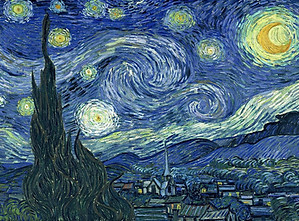
Van Gogh’s life is one of the most dramatic, romantic, and tragic stories in all of art history. His paintings are passionate, beautiful and they succeed in sharing with us, briefly, the experience of his madness. His career was very short but his gifts and his influence very great. Join us for a look at his work and the brief but brilliant flame that was his life. Nothing is stranger than the truth.
American Art Part 1 (1776 - 1900)
The United States was not founded by schooled artists, but by people seeking freedom and adventure. American artists have been like America itself, pioneering, bold, and independent. Early American artists had their roots firmly planted in European traditions but explored their own frontiers and evolved their own unique flavor, forged in the struggles of the birth of a nation. Join us for a look at the roots of American Art from 1776 until 1900 with its pioneering courage,independent drive, and rebellious spirit.

American Art Part 2 (1900 - 1950)

The center of the art world has always been Europe, and American artists have, by necessity, mostly followed those evolutions. The American independent spirit pushed the boundaries of acceptable traditions, and in the early part of the 20th century Americans begin to develop their own unique voice; the Ash Can School, the flowering of photography, and the consciousness of Social Realism were just some of the new developments that reflected the history of those times. Join us for a look at how American Art grew from the baby in the back seat to an adolescent growing, experimenting, gaining attention and earning respect.
American Art Part 3 (1950 - 1990)
In the second half of the 20th century, America breaks free of it’s European bonds to defy convention, and then dominate the entire art world. There was an explosion of creativity on this side of the ocean. American Art grows up and demonstrates it’s own unique personality; innovative, and sometimes controversial. But whether you swear by it, or at it, it is always fun. Join us for a look at how art in America evolved in the modern era, from Pop Art to Grandma Moses, how it took the seat of power with all its new directions, energy and nerve. You can’t “like” it all, but you may go home with more than you thought. Where in the world do you think it is going next?
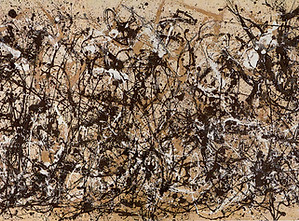
American West

American artists have been like America itself, pioneering, bold, and independent. Especially in the western frontiers where artists were confronted with a totally new and unbelievably beautiful landscape, an alien culture and a dramatically different life style. It fascinated everyone, especially the jaded and complacent Europeans who were enthralled and seduced by the Western American experience. But, it was all over in just 90 years. It took only one life span to end this chapter of our history; from the virgin exploration through pristine lands to the massacre of millions of bison; the pioneers, trappers, cow- boys, settlers, miners, and the total redistribution of native Americans in the Indian Wars.
Please join ArtMatters for a look at a very brief but special time in our nation’s history through the eyes of artists who tried to capture the flavor of a lost era and preserve it for us.
American Watercolors
Most people think that watercolor is an elegant but simple painting medium. However, the only thing easy about painting with watercolors is cleaning them up. It is truly one of the most difficult means of realistic expression. Some of the few to succeed in this subtle and beautiful medium happened to be Americans. Join us for a look at the work of some great American watercolorists including John James Audubon, Winslow Homer, and John Singer Sargent.

Winslow Homer

He got his start by illustrating scenes from the Civil War for Harper’s Magazine. He documented post war, rural Americana and later dramatically explored man’s relationship to nature. He was one of the greatest watercolor painters and was profoundly influential. Join us for an up-close look at the work of one of America’s most beloved painters.
Georgia O'Keeffe
On the front lines in the conflict between realism and abstraction was a woman. Georgia O’Keeffe was a woman who was able to influence even the male dominated Avant Garde culture of New York City in the beginnings of the “Modern Century”. Join us for a look at her art, her own conflicts, and her solutions in a fertile era of great cultural change.

Alexander Calder
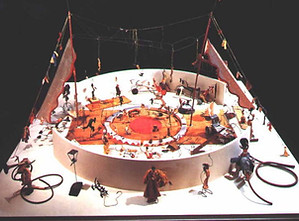
Coming Soon
Born in Pennsylvania,he was the third generation of successful sculptors. From when he was a small boy, he was always making “stuff”; toys, utensils, and objects out of bits of string, wire, buttons, cloth, wood and tin. He always had a sense of whimsy about his objects and invented the “Mobile”; a way to compose colorful shapes, and fine lines moving in a constantly changing arrangement. He is also known for creating and performing his own circus. Join us for a whimsical look into his world.
Norman Rockwell
One of the most beloved American Artists was a painter who illustrated over 322 covers for the Saturday Evening Post for 47 years. Join us to enjoy and discuss his wonderful images and to remember why he is recognized as an icon with such phrases as: “As American as apple pie, baseball and Norman Rockwell.”

New York, NY
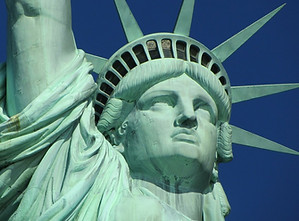
Start spreading the news! There is a love affair between artists and NYC. The starting place for immigration and embarkation for trips abroad. The place for artists to be for learning, earning and yearning (paying their dues). The home of possibilities and impossibilities that sometimes come true. If you can make it there, you’ll make it anywhere! Please join us in an artistic celebration of NYC, the unofficial center of the universe, a place so nice they named it twice.
Spanish Masters
Master painters El Greco, Diego Velazquez and Francisco Goya recorded far more than the flavor of Spanish life and history. The wealthiest and most powerful country in Europe was also the most repressed. Join us for a look into almost 300 years of Spanish art and culture.
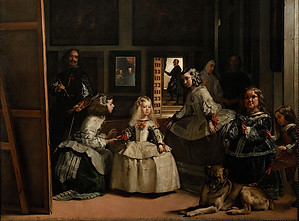
Francisco Goya

Coming Soon
Known as the last of the Great Masters and the first of the Modern Masters. As Spain's conscience and chronicler, Goya documented the Royal Court with an sarcastic edge born of justice. A versatile artist, he created paintings, etchings & lithographs, tapestries, and frescos. His career spanned an explosive era of Spanish history, which he portrayed with unflinching honesty. He observed clearly both the highborn with their excesses & the madness of the masses, and he painted both with an unprecedented dedication to truth.
Pablo Picasso
Whether you swear by him or at him, Picasso was undeniably the most successful and influential artist of the 20th Century. He was certainly the most influential artist since Leonardo Da Vinci. He was able to change his style, so quickly, so completely, that he seemed like many different artists. You can’t like it all, he made over 50,000 works of art. But there will be one era, one style, even a single painting, that will make you say; “I didn’t know Picasso did that, I love that.” Join us for a look at, and a discussion of, the many, many styles, expressions, loves and lives of the man at the heart of modern art.

Henri Matisse

Enter the world of Matisse. A world of color, enjoyment and peace. A place that celebrates flowers, sunshine, beautiful women, complex patterns, rich textures, fine foods, tempting aromas, books, dance, music and art. Matisse’s world has a “calming influence on the mind, like a good armchair.” Indulge yourself and join us for a vacation from stress, into the sanctuary of Matisse’s World.
Marc Chagall
Known as the “Poet”, he was one of the most versatile artists of the 20th Century. He merged the traditional images of his native Russian, Jewish culture with the modern styles of Cubism, and Fauvism. His paintings portray stories and fables, ideals of freedom, dreams of love, nightmares of war, passionate emotions and soul refreshing humor. He never finished a canvas until something in it “surprised” himself. Join us for a retrospective look at his work, his life, and his unique perspective of the world.

Surrealism

What is real? What is a dream, a nightmare, a fantasy? Many artists make visual what many can only imagine. The Surrealists view of the world was sometimes dark, curious, even frightening, exploring the subconscious and the irrational. But also they reveal curiosity, much humor, and the poetic hint of possibility. Touch your inner eye, brave the world of the surrealists.
History of Illusion & MC Escher
The hand is quicker than the eye. Artists love to fool you with Illusion in many ways. Join us for a look at the tricks of the art world from Da Vinci and Anamorphic art to Op art and the Magic Eye. We will take a special look at the work of M.C. Escher, a Dutch graphic artist who was a master of the paradox, the tessellation, the dodecahedron, and grand manipulator of the basic laws of nature in illusion.

Music & Dance

The human brain is an amazing thing. We use visual images to communicate with one another as a species. We look at images with our eyes, but pictures can connect us to our other senses as well; sound, touch, even taste & smell. We hear the music, feel the movement and can remember events in our lives with all of our senses, just by looking. Join us for some “sensory recall”, as we look at images that let us listen, dance and connect to the world and our own lives.
Women Artists Part 1 (Until the 20th Century)
Women artists, capable of the art of creation as well as the creation of art, have historically proved threatening to the dominant male establishment. There are many examples of how she has flourished and failed, been celebrated or crushed, but in almost every instance, needing to be better than their male competitors to be taken seriously. Join us for a look and a discussion about the women who have defied convention to make art from the Renaissance through the 19th century.

Women Artists Part 2 (Of the 20th Century)

Women artists, capable of the art of creation as well as the creation of art, have historically proved threatening to the dominant male establishment. In more modern times, our ability to create art was less openly inhibited, but new, modern obstacles arose. Join us for a new look and a discussion about the women and their struggle to make art in the 20th Century.
Mother & Child
The bond between parents and their children is very special, very personal, and yet universal. This relationship transcends language, different cultures, great distances and time itself. Art speaks to this bond, so we can understand and share the connections and experiences made between mothers & their children throughout our human history. Fathers welcome. Join us for a special sharing, and invite your children.
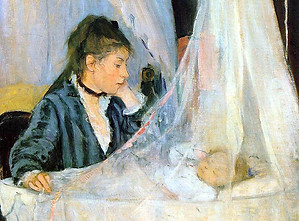
Animals - Beasts of Fame & Fable

Humans are the only animals that communicate with art. But we love animals, and we especially love art about animals. Many creatures indeed are so important to us that we have imbued them with mythical abilities, magical symbolism and villainous qualities that have greatly influenced much of our culture and religion. We love animals so much we had to invent new ones. Join us for a journey around the world and throughout history to appreciate how connected we are with the beasts of fame and fable and how we have cultivated these myths and fables to connect us to one another in art.
Animals - Wild & Domestic
Humans are the only animals that communicate with pictures. But we Humans love animals, and we especially love art about animals. Wild or domesticated, beasts of burden or sport, we have a special relationship with the animal kingdom and depend upon them for the quality of our own existence. Join us for a journey around the world and throughout history to appreciate how connected we are with animals and how daily they improve the quality of our own lives.

Animals - Our Pets

Although we use art to communicate with one another as Human Beings, it is with other animals we are sometimes more connected to. We have a special relationship with our most intimate friends, the ones with which we share our daily lives. We are very emotionally connected to our pets. Join us for a journey around the world and throughout history, with art, to see and appreciate how connected we are, and how well we understand our relationships with our many pets.
Sculpture in Western Civilization - Part 1, Ancient to 1900
Sculpture is the art of making real objects from many kinds of substances.
It is a physical, sometimes complicated process, requiring many kinds of tools, chemical treatments, solvents, dyes, large equipment, and sometimes furnaces or kilns. It can be as monumental as a mountain, or as small as coin. Since sculpture exists in 3-dimensional space, with many different perspectives, including looking up from below, and down from above, it requires solving multiple compositional problems. Join us for the first part of a history of Human expression with sculpture, from ancient times until the modern era.

Sculpture in Western Civilization - Part 2, 1900 to 2000
.jpg)
Until the modern era, sculpture was mostly municipal. It was sponsored by Pharaohs, Royalty, heads of state, churches, or local communities, with committees organized to approve project designs, and raise funds. The modern era ushered in a time of more private sponsorship of sculpture, and it has evolved dramatically.
Join us for the second part of a history of Human expression with sculpture, from 1900 until today.














































.jpg)


